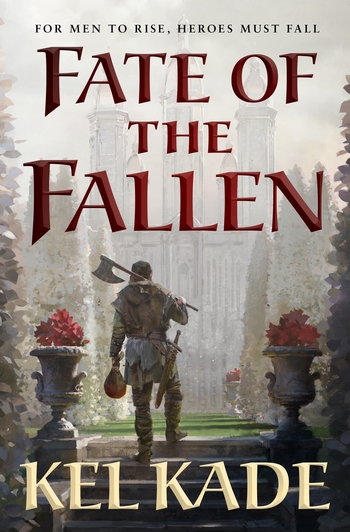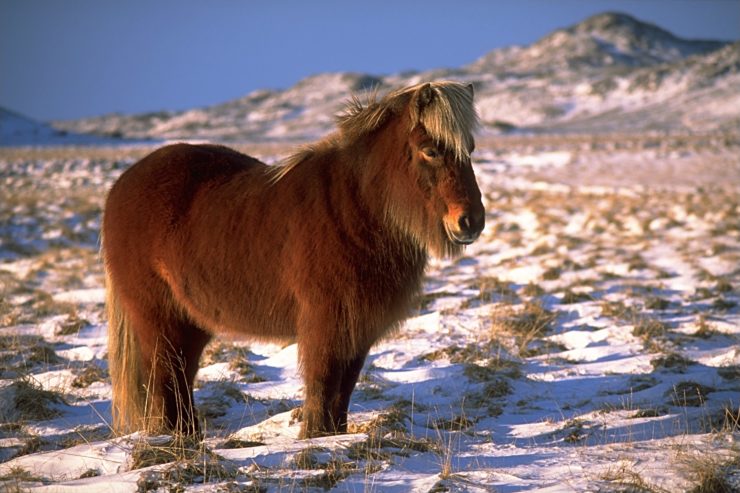In my other regular column for Tor.com, I happened to be reading a novel that demonstrated the difference between research and experience when it comes to horses. One of the things that made the point for me was the way the author referred to different breeds and types, but without seeming to get the distinction, or to have realized that horse breeds would be different in a secondary-world fantasy.
Horse people get this. Mercedes Lackey is a horse person par excellence. You won’t see Arabians or Quarter Horses or Vanners in her Valdemar books, but you will learn quite a bit about Shin’a’in horses.
There’s a reason for this.
First let’s get out the dictionary. The noun Breed, says Merriam-Webster, is defined as biology: a group of usually domesticated animals or plants presumably related by descent from common ancestors and visibly similar in most characters. Horse breeds, like dog and cat breeds, tend to be overseen by registries that keep studbooks or compilations of pedigrees.
What the registry registers varies by breed. A closed studbook only allows the offspring of registered animals. If the parent isn’t registered, the offspring can’t be. An open studbook doesn’t mean it’s open to any horse whose owner wants a set of fancy papers; there are restrictions and standards that have to be met. Only individuals of certain related breeds are allowed in, for example—Appaloosas can be crossed on Quarter Horses, Thoroughbreds, and Arabians; Paint horses can be crossed on Quarter Horses and Thoroughbreds. But these three outcross breeds have their own restrictions—an Appaloosa-Quarter Horse cross cannot be registered as a Quarter Horse, and neither the Thoroughbred nor Arabian registries allow any outcrosses at all.
Buy the Book


Fate of the Fallen
Other registries are based on particular traits. Palomino and Pinto are color registries that accept any animal of that color. Paint and Appaloosa are also based on color, but will accept individuals on the basis of bloodlines. A Paint horse without white markings can be registered as “breeding stock,” and an Appaloosa without spots is accepted as long as he has white sclera around the eyes, mottled skin, and striped hooves. The Friesian registry will not register a horse who is not solid black, and the Cleveland Bay must be bay. No other colors need apply.
There are two broad categories of breeds. One is a deliberate invention based on specific traits. The Vanner, for example, began as a marketing tool. Enterprising people canvassed the British and Irish horse fairs in search of smallish, heavy-set, pinto-patterned animals with lots of mane, tail, and leg feathers. A legend was attached to these horses, about how they were this ancient breed cultivated by the Travellers and the Roma (Gypsy is a pejorative), oh so rare and oh so special, with a nice big price tag attached.
A similar but considerably less commercial creation is the Morgan, descended from a single stallion of unknown heritage but powerful genetic influence—what’s known as prepotence. This horse, Figure, owned by Justin Morgan, ended up being called by the name of his owner, and his descendants became the Morgan horse. To this day they all look remarkably like that little, brilliant, multitalented horse, though most of them now are quite a bit larger than their forebear.
Other breeds emerged from the needs or wants of the breeders. The Standardbred was bred to a specific standard of speed in trotting races. The Orlov trotter is the Russian version. The Thoroughbred is a running racer, mostly these days over a mile or so. The Quarter Horse, that all-purpose vehicle of the American West, started as a quarter-mile sprinter.
The other broad type of breed has evolved over time in a specific geographic area. Hence the Arabian, the Shetland pony, the Welsh pony (and Dales and Fell, too), the Friesian, the Andalusian, the Hannoverian, the Trakehner, the Kladruber, the Lipizzaner, the Belgian (and Brabanter), the Clydesdale, the Suffolk Punch, and so on and on. One of the most extreme examples is the Icelandic horse, which has been bred from the same undiluted stock for a thousand years.
Now that you’re all suitably overwhelmed with names and data (and I’ve run out of stamina for linking all the links), here’s what it means for your fantasy world. When you look at lists of horse breeds, these breeds are specific to our planet, and many of them have only existed as breeds for a century or two—some a great deal less than that. Many of them are also native to particular regions. If you insert a Haflinger or a Vanner or an Arabian or a Morgan into your secondary-world fantasy, but everything else in that world is based on invented history, languages, and geography, you have to find a really good and convincing way to explain how a modern Earth horse ended up in Fantasylandia. Portal? Spaceship? Because it could not have originated anywhere but on Earth.
What you can do is become familiar with general types of horse. On a scale from little to huge, horses divide into certain broad categories. Different breeds have been developed from these types, of from crossing one or more—the Friesian for example is a combination of the light, relatively fiery Spanish horse and the heavy horse of Friesland.
A pony is actually a subspecies. It’s built differently than a horse: shorter, stockier, thicker, usually with a heavier mane and tail. Some breeds and types of horse can be quite small, but they’re not ponies. They’re more lightly built, and usually have less hair. Though that’s not hard and fast—the Icelandic is a horse, despite being well down in the pony size range, and is quite handsomely endowed with mane and tail.
Anyway. For simplicity’s sake, the short, chunky critter with the wicked smarts can go by the name of pony. Next up in size is the cob. He’s fairly sturdy, too, but generally less hairy, and he’s a good mount for your heavyset character and for your character who needs a nice, not necessarily fancy form of transport.
Both of these types can be driven as well as ridden, and both are quite strong. A pony can carry a full-grown man, though the man’s feet might drag on the ground. He can certainly pull a cart or a plow.
Moving up in size and fancitude, you’ll be wanting to think about what you want your horses to do. A racehorse will tend to be fairly lightly built, fairly leggy and tall, and of course fast. A coach horse can be quite large, and he doesn’t need smooth gaits; often he’ll have a huge, ground-devouring trot. A draft horse may be surprisingly small—he can be pony-sized, but he’s powerfully built and designed to pull. On the other end of size, he can be outright huge, though in a preindustrial setting you have to think about how he’s going to get enough fodder to keep him going. He will not have a lot of endurance; he’s not the horse you want for that wilderness trek. That’s the cob or the all-around mixed-breed riding horse, or if you really need stamina, a mule (offspring of a mare and a male donkey).
For basic ridden transport, a horse with smooth gaits is much to be desired. If it’s gaited, so much the better. Hence the popularity in the Middle Ages of the ambler, and in the American colonies of the shuffler and the plantation walker and the gaited saddle horse; plus, moving southward, Paso Fino and Peruvian Paso and Brazil’s own Mangalarga Marchador. These horses do not move like other breeds, sometimes spectacularly so, but they are all extremely smooth and fluid to ride. Also in this category and in a very different part of our world: the Icelandic horse, who can get up some serious speed in the tolt.
A war horse will vary depending on what type of fighting he’s doing and who’s riding him. Tech level and weight of armor are both really important. So are terrain and climate.
Your fast desert raider will want an Arabian type—but don’t call it that. Smallish, light, needs very little feed to survive. Whereas your armored knight will want a biggish horse with solid bone and significant weight-carrying capacity. He won’t be fast but he will make up for it with mass, especially a whole line of his relatives charging downhill.
Got chariots? Pony-sized horses will do for those, as will donkeys. Greek or Roman-style cavalry? No stirrups, bear that in mind, and probably fairly small horses, though not necessarily pony-sized.
Have cavalry but also guns and cannons? Mount your officers on fancy Andalusian or Lipizzaner types (but don’t call them that!) and your troopers on the chunkier end of the Thoroughbred or the European Warmblood—the Trakehner is a good model for that, or the French Selle Francais. Or you might go for a Morgan type, as some units of the US Cavalry did. Meanwhile, for pulling the caissons, look to a nice, not too big, not too heavy draft type. Or, let us never forget, a good team of mules.
All of which is to say that different breeds of horses evolved or were developed for different regions, climates, and uses. If you’re translating that to an invented world, you have literally hundreds of models to choose from, and a wide range of types and gaits and personalities and even colors. You can be fairly inventive, if you know certain basics, and if you’re aware of what you’re referring to when you talk about a cob or a draft or a pony or a destrier.
There are jobs some types are not well suited for—a draft on a desert trek, a desert runner in a six-ton pulling contest—and some types, such as the cob or the light draft (think Morgan or old-style ranch Quarter Horse), that do well in just about anything. Just remember not to give them their Earthling breed names. Horse people will figure it out anyway, and smile, and say, “Well, they did that one right.”
Photo by Andreas Tille, licensed under the Creative Commons Attribution-Share Alike 3.0 Unported, 2.5 Generic, 2.0 Generic and 1.0 Generic license, via Wikimedia Commons.
Judith Tarr is a lifelong horse person. She supports her habit by writing works of fantasy and science fiction as well as historical novels, many of which have been published as ebooks by Book View Cafe. She’s written a primer for writers who want to write about horses: Writing Horses: The Fine Art of Getting It Right. Her most recent novel, Dragons in the Earth, features a herd of magical horses, and her space opera, Forgotten Suns, features both terrestrial horses and an alien horselike species (and space whales!). She lives near Tucson, Arizona with a herd of Lipizzans, a clowder of cats, and a blue-eyed dog.










